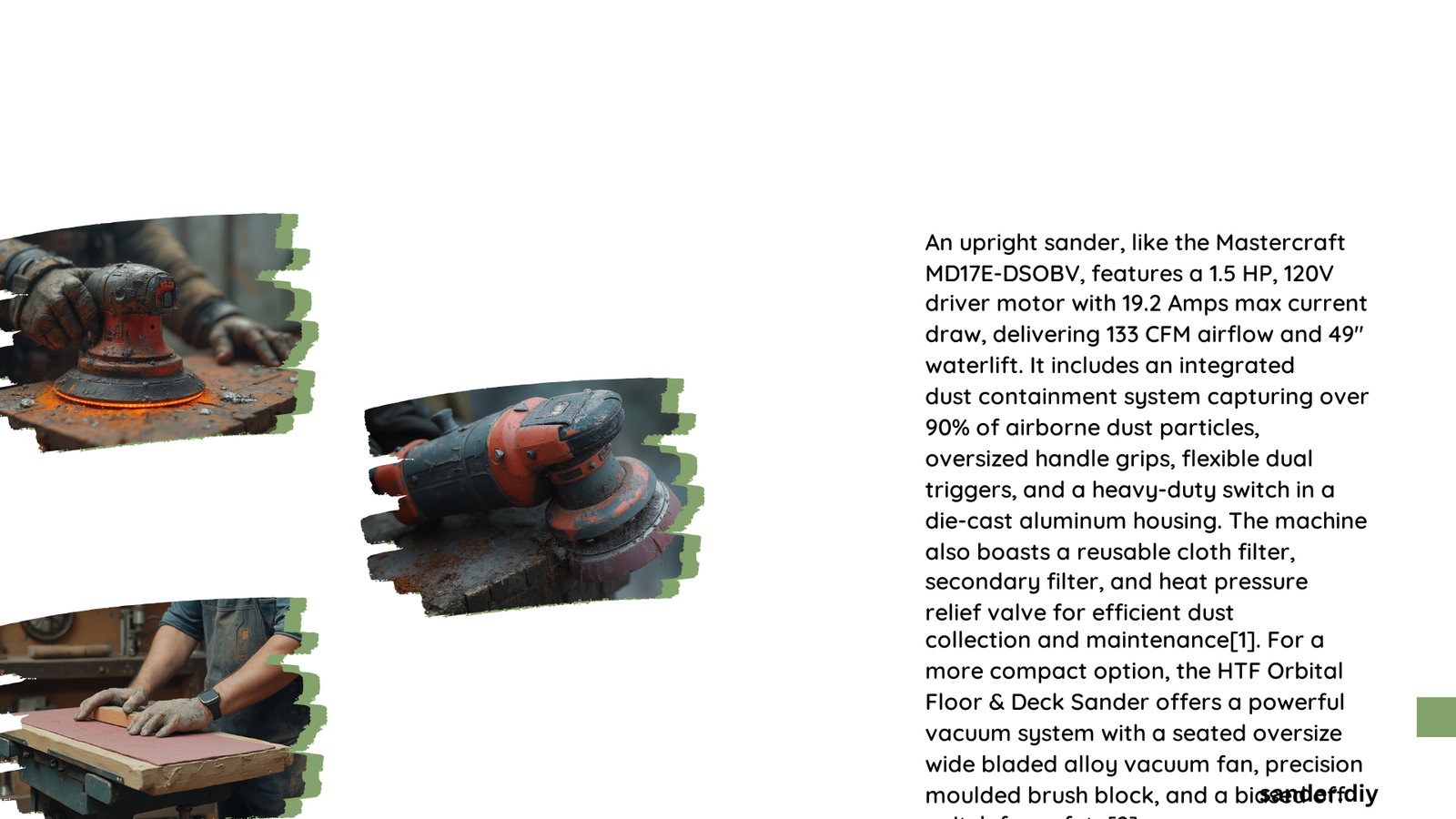An upright sander represents a versatile and powerful woodworking tool designed to provide precise surface preparation and finishing. These stationary machines combine belt and disc sanding capabilities, enabling woodworkers to tackle various material removal and smoothing tasks with exceptional accuracy and control. From professional workshops to dedicated hobbyist spaces, upright sanders offer unparalleled performance in shaping, leveling, and refining wood surfaces.
What Makes an Upright Sander Essential for Woodworking?
Upright sanders are specialized stationary tools that combine multiple sanding configurations to deliver comprehensive woodworking solutions. Unlike handheld sanders, these machines provide stable, consistent performance across different projects.
Key Components of an Upright Sander
| Component | Function | Importance |
|---|---|---|
| Belt Mechanism | Material removal | High |
| Disc Surface | Edge and curved surface sanding | Medium |
| Adjustable Table | Precise angle control | High |
| Dust Collection System | Clean workspace maintenance | Critical |
How Do Professional Woodworkers Select the Right Upright Sander?

Performance Metrics to Consider
- Motor Power
- Typically ranges between 1/2 to 3/4 horsepower
- Higher amperage indicates stronger performance
-
Recommended range: 4-8 amps for most woodworking tasks
-
Sanding Speed
- Belt speed measured in surface feet per minute (SFM)
- Ideal range: 1500-2000 SFM
-
Determines material removal efficiency
-
Versatility Features
- Adjustable belt/disc angles
- Multiple speed settings
- Quick belt changing mechanism
What Maintenance Practices Extend Upright Sander Lifespan?
Routine Care Strategies
- Regular Cleaning
- Remove dust after each use
- Use compressed air for hard-to-reach areas
-
Inspect belts and discs for wear
-
Lubrication
- Apply graphite-based lubricants
- Focus on moving parts and bearings
- Avoid oil-based products that attract dust
How Much Should You Invest in an Upright Sander?
Price Range Breakdown
- Entry-Level Models: $150 – $250
- Suitable for hobbyists
- Basic features
-
Limited power
-
Professional Grade: $300 – $800
- Advanced dust collection
- Powerful motors
- Precision engineering
Which Brands Offer Top Upright Sander Models?
Recommended Manufacturers
- Makita
- Metabo HPT
- WEN
- Rockwell
- Jet
What Safety Precautions Should You Follow?
Essential Safety Guidelines
- Wear protective eyewear
- Use dust masks
- Secure workpiece properly
- Disconnect power before maintenance
- Keep workspace clean and organized
Troubleshooting Common Upright Sander Issues
Quick Problem-Solving Techniques
- Belt Slippage
- Check tension mechanisms
- Inspect roller alignment
-
Replace worn components
-
Excessive Vibration
- Verify mounting stability
- Balance sanding surfaces
- Check for damaged bearings
Conclusion
An upright sander represents a significant investment for serious woodworkers, offering precision, efficiency, and versatility. By understanding its features, maintenance requirements, and operational techniques, you can maximize your tool’s performance and longevity.
